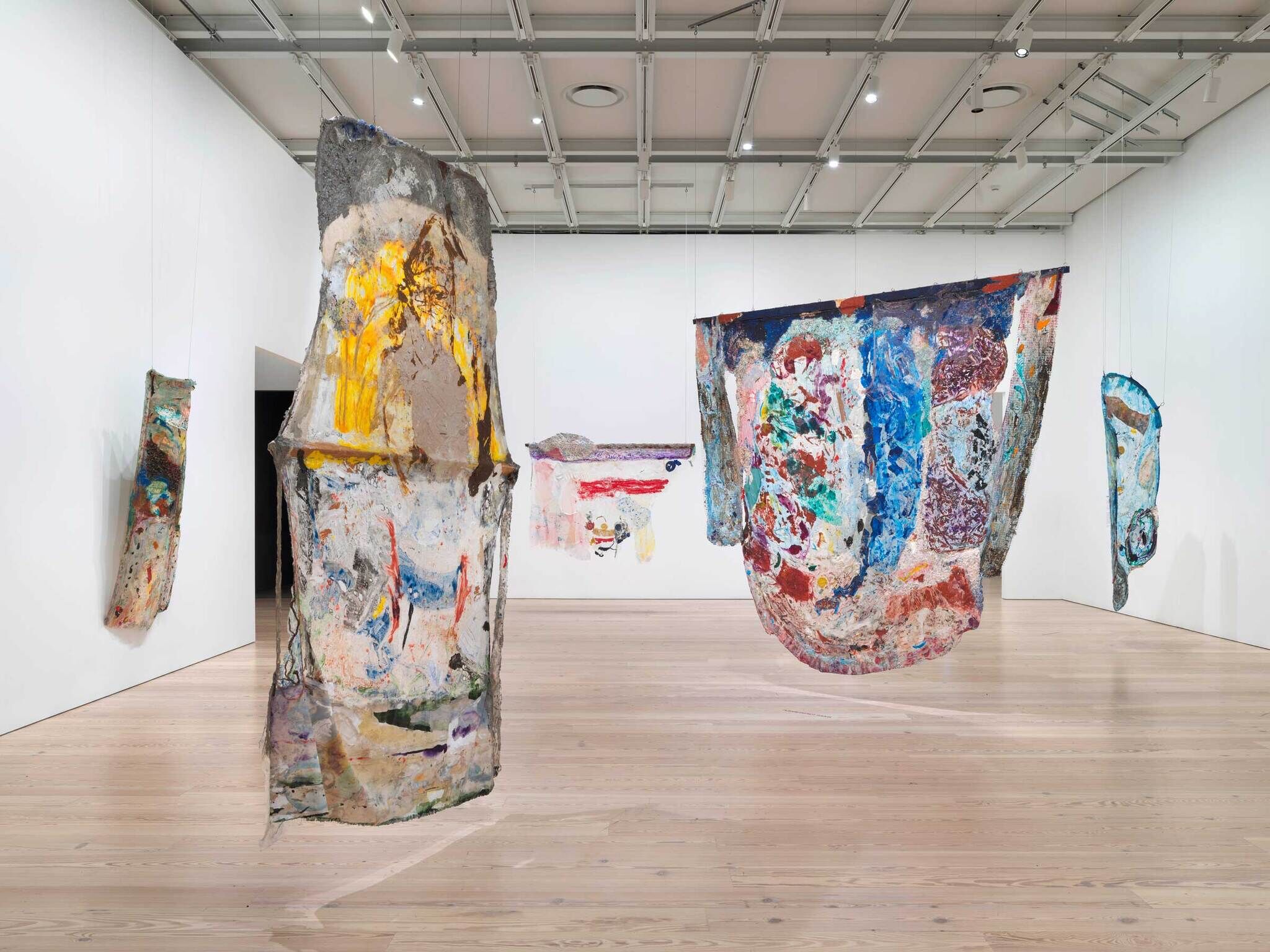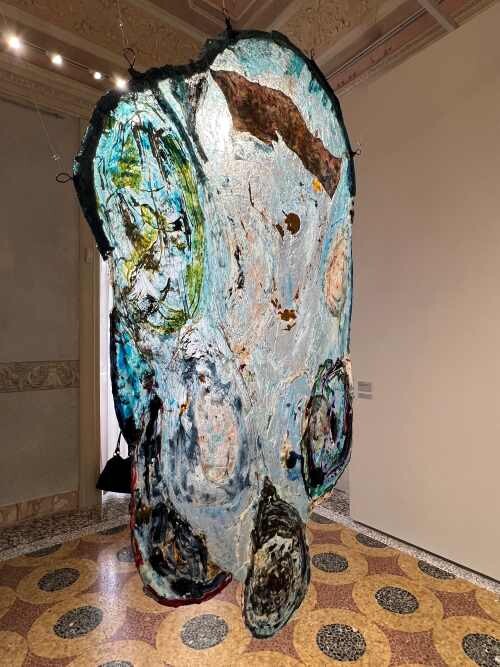Suzanne Jackson
Suzanne Jackson is an artist born in Saint Louis, M.O., in 1944. Her family moved to San Francisco during the Great Migration where she studied painting and theater. She later received an MFA in Theater Design from Yale University. Now, she lives and works in Savannah, Georgia, where she experiments across genres in printmaking, poetry, dance, and costume design. Her recent “anti-canvases” are partially structured with a wide range of materials–seeds, string, bells, lace, and netting that support thin layers of paint applied by hand to create transparent and gestural impressions of process. From 1969-70, Jackson ran Gallery 32 in a Los Angeles loft, in which she collaborated with a community of artist peers including David Hammons, Betye Saar, and Senga Nengudi among others. More recently, she has contributed to the radio show, Listen Hear, where she co-hosts a weekly program centered around a love of jazz and conversation.
Jackson’s dimensional painting process is consumed with layering towards luminosity, with a focus on light, color, and texture. For the Biennial, Jackson exhibits recent wall works and suspended objects made of materials culled from a variety of sources. Curtain lace, shredded mail, produce bag netting, and vintage dress hangers form the architecture and armatures for these painted forms. However, these materials are obscured in their final iteration. Stiff wire structures take on soft organic shapes. Hard-edged cut paper and bag refuse are layered to develop new forms and create alternate associations. Jackson puts particular emphasis on titles and personal history– often sharing the ways in which her travels and various migrations have been formative in developing memory and meaning in her work.
Activities
How do you make an artwork out of found materials?
What are some materials you see discarded every day that might find new purpose or meaning within the structure of an artwork? How might you transform these materials to change their original qualities or associations? Try taking apart and reassembling these found materials. What new ideas or meanings might these alternative constructions suggest?
Give your artwork a title to describe its overall quality or essence. Step back from your finished artwork and try to look at it with fresh eyes as if you were encountering the object for the first time. Make a list of the first ten words that come to mind and select two or three to combine and create a title for your art. Alternatively, share your work with a classmate or family member and ask them to respond with their initial thoughts and associations. Consider whether their impressions resonate with your own.



